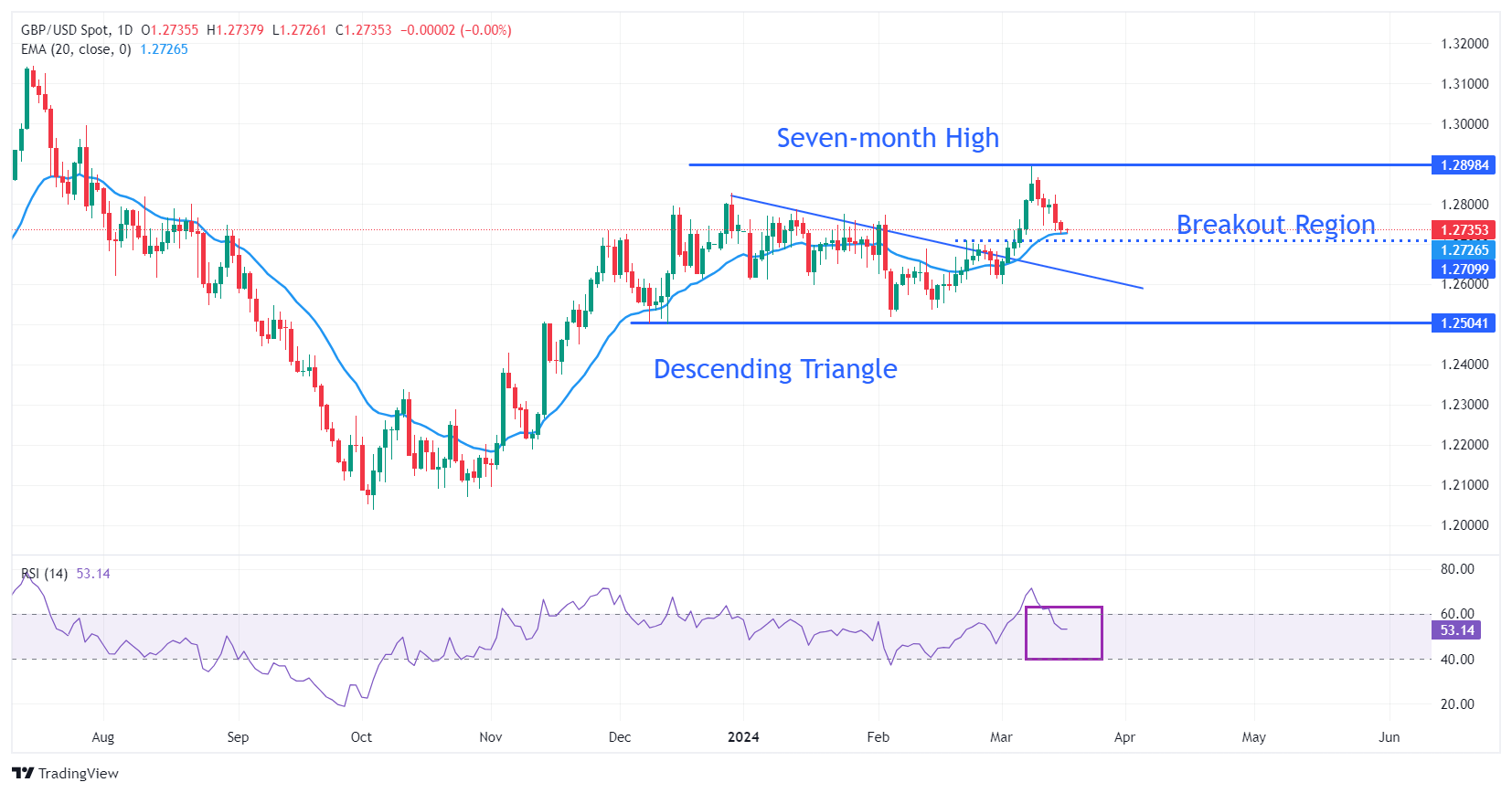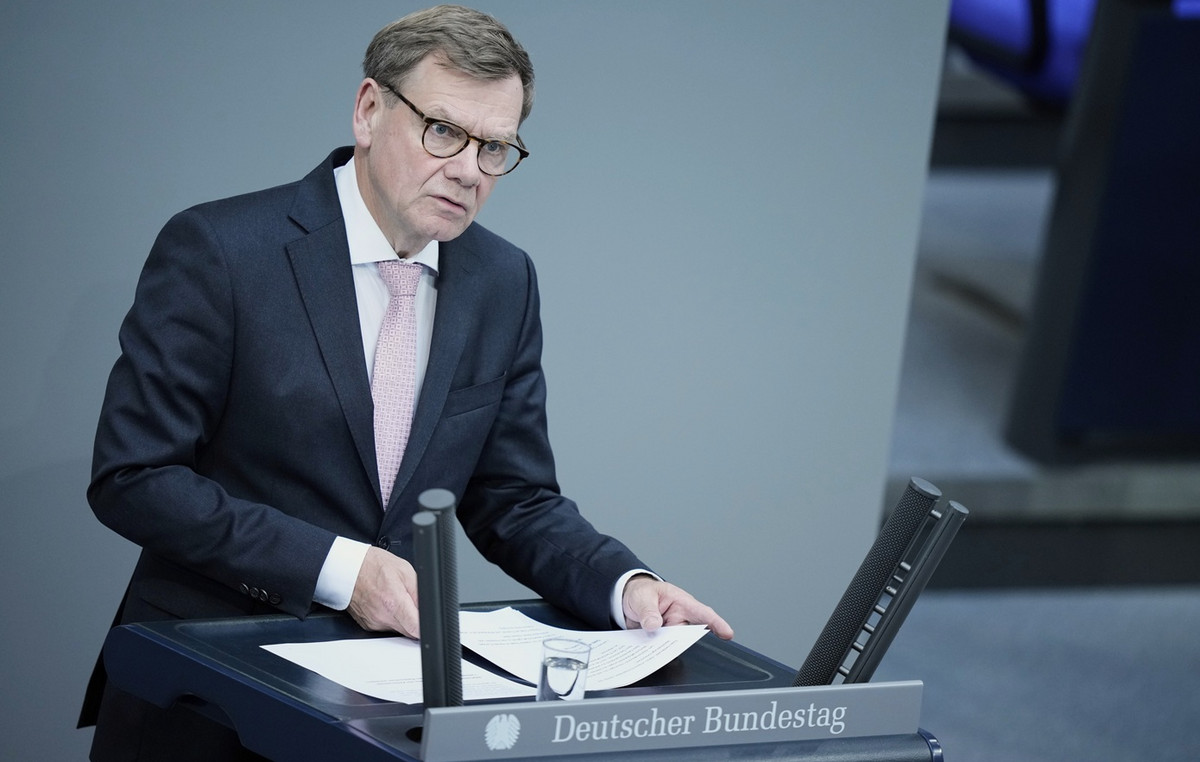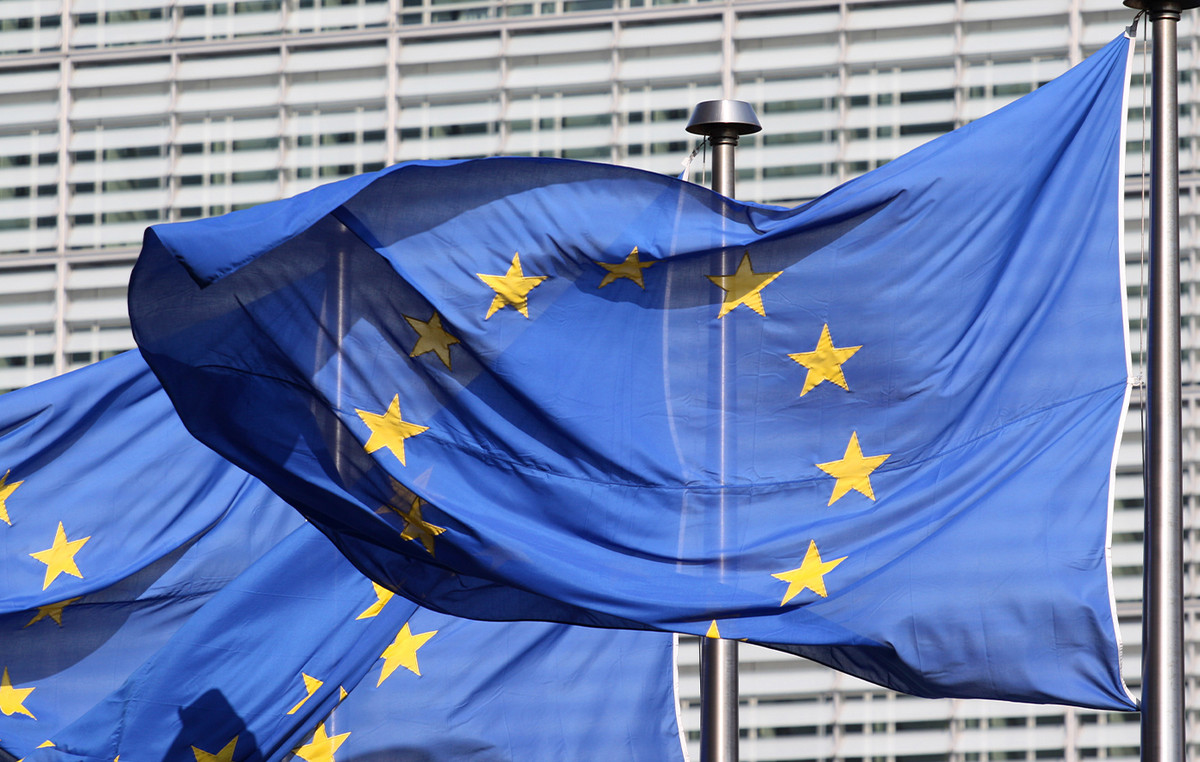- The Pound sterling is trading sideways, while investors await the evolution of inflation in the United Kingdom and the decision of the BoE.
- The BoE is expected to keep interest rates unchanged as British inflation is far from the 2% target.
- The Fed dot chart will guide the next move of the US Dollar.
The British pound (GBP) fights for a decisive move in Monday's final session in London. Investors are on the sidelines awaiting interest rate decisions from the Federal Reserve (Fed) and the Bank of England (BoE), which will be announced on Wednesday and Thursday, respectively.
Investors expect the BoE to keep interest rates unchanged at 5.25% as inflation is well above the desired rate of 2%. Market participants will focus on interest rate guidance, i.e. clues as to how long the BoE will keep interest rates high.
Markets currently expect the BoE to begin cutting interest rates at its August policy meeting. However, policymakers have said rate cuts would only be appropriate if they are convinced inflation will rise sustainably to the 2% target.
The BoE has to balance between high inflation and uncertainty about economic growth. The British economy entered a technical recession in the second half of 2023, recording a contraction in the last two quarters. The nation grew 0.2% in January, but this is insufficient to confirm that the economy has returned to growth in the first quarter as a whole.
Daily summary of market movements: The Pound is trading sideways, following the US Dollar
- The British pound is trading in a narrow range around 1.2730 and remains weak as investors focus their attention on monetary policy decisions from the Federal Reserve and the Bank of England. The Fed is expected to keep interest rates unchanged in the 5.25%-5.50% range. Investors will focus their attention on the dot chart, which indicates policymakers' expectations for interest rates over time.
- In the December dot plot, Fed officials were forecasting three rate cuts this year. The Fed could revise these forecasts, since consumer and producer price inflation has been stubborn in the first two months. If the Fed projects fewer rate cuts, the attractiveness of the US dollar would strengthen. The US Dollar Index (DXY) has started the week in flat territory, trading dully around 103.45.
- Across the Atlantic, the BoE is also expected to keep interest rates unchanged at 5.25% for the fifth time in a row. The UK's inflation victory is far from over, with the boost to wage growth significantly higher than needed to bring inflation down to the 2% target. Of the nine members of the monetary policy committee, MPC member Swati Dhingra is expected to support a rate cut decision.
- Ahead of the BoE decision, the British pound will dance to the February Consumer Price Index (CPI) data, due out on Wednesday. The annual core CPI, which removes volatility from food and energy prices, is expected to have slowed to 4.6% from 5.1% in January. The monthly general CPI is expected to have grown by 0.7%, after having decreased by 0.6% in January.
- Weak inflation data could raise expectations that the BoE will cut rates at the August policy meeting, while warm numbers are likely to dampen these expectations.
Technical Analysis: British Pound Nears 20 EMA at 1.2730

The pound moves back and forth around 1.2730. The GBP/USD pair corrected to the 20-day EMA near 1.2730, as the divergence with the pair's prices widened. The pair could find support near the descending triangle breakout zone, which is around 1.2700. On the upside, a seven-month high around 1.2900 will be a major roadblock for Sterling bulls.
The 14-period Relative Strength Index (RSI) returns to the 40.00-60.00 range, indicating a sharp contraction in volatility.
Pound Sterling FAQ
What is the Pound Sterling?
The British Pound (GBP) is the oldest currency in the world (886 AD) and the official currency of the United Kingdom. It is the fourth most traded currency unit in the world, with 12% of all transactions and an average of $630 billion per day, according to 2022 data.
Its key currency pairs are GBP/USD, also known as “Cable”, which represents 11% of the forex market, GBP/JPY, or the “Dragon” as it is known to traders (3%), and EUR/GBP (2%). The pound sterling is issued by the Bank of England (BoE).
How do Bank of England decisions influence the Pound Sterling?
The most important factor influencing the value of the Pound Sterling is the monetary policy decided by the Bank of England. The Bank of England bases its decisions on achieving its main objective of “price stability”, that is, a stable inflation rate of around 2%. Its main tool to achieve this is the adjustment of interest rates.
When inflation is too high, the Bank of England tries to contain it by raising interest rates, which makes access to credit more expensive for individuals and companies. This tends to be positive for the GBP, as higher interest rates make the UK a more attractive place for global investors to park their money.
When inflation is too low, it is a sign that economic growth is slowing. In this scenario, the BoE will consider lowering interest rates to make credit cheaper, so that companies borrow more to invest in projects that generate growth.
How does economic data influence the value of the Pound?
The published data gauges the health of the economy and may influence the value of the Pound sterling. Indicators such as GDP, manufacturing and services PMIs, and employment can influence the direction of the Pound.
A strong economy is good for the British pound. Not only does it attract more foreign investment, but it may encourage the Bank of England to raise interest rates, which will directly strengthen the Pound. Otherwise, if economic data is weak, the pound is likely to fall.
How does the trade balance affect the Pound?
Another significant data for the pound sterling is the trade balance. This indicator measures the difference between what a country earns from its exports and what it spends on imports during a given period.
If a country produces highly sought-after exports, its currency will benefit exclusively from the additional demand created by foreign buyers wishing to purchase these goods. Therefore, a positive net trade balance strengthens a currency and vice versa for a negative balance.
Source: Fx Street
I am Joshua Winder, a senior-level journalist and editor at World Stock Market. I specialize in covering news related to the stock market and economic trends. With more than 8 years of experience in this field, I have become an expert in financial reporting.







